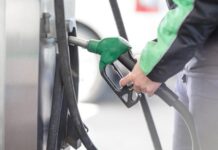Pressure control devices are used to control the pressure of a system. There are different kinds of pressure regulators available in market back pressure, vacuum pressure, differential pressure or pressure reducing regulators. Some pressure regulators are specifically designed for fluid control like oil or fuel an electronic pressure regulator can be used to control the flow of fluid.
Pressure regulating devices reduce the input high pressure to a specific low pressure control output. The purpose of such a device is to maintain a consistent pressure in a system. Sometimes they may experience some kind of pressure drop called a droop. One of the important features in choosing the right regulator is its adjustment range or regulating range and for what type of fluid you are controlling.
Almost in every pneumatic and hydraulic system pressure control valves are being used. These valves can be used to keep the pressure at a desired limit to set pressure at a certain level in a circuit. Different types of pressure control valves include relief control, reducing, sequence ,counterbalance ,safety and unloading valves.
Pressure Relief Valves
A PVR or pressure relief device is used in a pipeline or with vessels in a pneumatic system as a safety device. Amount of air pressure is limited by relief valves so that the pressure does not build above pre-set level. The higher pressure above the limit can cause damage and accidents to machinery or people working around them. When air pressure exceeds its limit it can cause shock and transients in a system to stop such a situation a pressure relief valve is used. an electronic pressure regulator can be used to control the flow of fluid.
Pressure relief valves are used in pneumatic systems in industrial applications which use compressed air as fluid. These valves are used in high pressure applications such as controlling oil or gas. It can be used in industrial processes where gasses are stored and transported at high pressure. These pressures need to be regulated to down level for safely working with fluids. It is a good practice to use a pressure relief valve in a system where over-pressurisation risk is involved.
Sequence Valves
In circuits with multiple actuators, it is probably required to move the actuators in a specific order or sequence. This can be accomplished using limit switches, timers, or other digital control devices together with sequencing valves.Sequencing valves are two-way closed valves that control the order in which specific circuit functions occur. These valves are similar to relief valves except their spring chambers are drained externally than internally to outlet ports like a relief valve.
Sequence valves are used in pressure keeping circuits. These valves are used in controlling the sequential actions of multiple components. It is used as a balanced valve to prevent the free falling of cylinder pistons due to self weight. It can also be used as an unloading valve to unload a pump. It can be used internally as back pressure valves. An electronic pressure regulator is mostly used to control the flow of fluid.
Pressure Reducing Valves
For maintaining a lower pressure in a pneumatic system a pressure reducing valve is used. These are usually two way valves that close when a sufficient downstream pressure is reached. There are two kinds of pressure reducing valves: direct acting and pilot operating.Regardless of changes in the main circuit, direct acting valves maintain maximum pressure in the secondary circuit. A Pilot pressure reducing control valve designed to lower a greater unregulated intake pressure to a constant, reduced outlet pressure regardless of variations in demand of inlet fluid pressure.
Counterbalance Valve
These valves are typically closed and used to maintain a set pressure in a portion of a circuit to counterbalance a weight. The form of valve is suitable for counteracting an external force or a weight, such as in a press, to keep it from free-falling. These valves are used to safely hold suspended loads and deal with over-running loads. Hydraulic motors use these valves normally called brake valves. To prevent fluid from drifting in a cylinder both counterbalance and pilot operated check valves are used.
The counterbalance valve allows the load to move at the right flow rate only, preventing the weight from over-speeding the pump.This is very helpful in mobile applications. In a mobile cylinder, the load frequently swings “over-center” and becomes a negative load in an attempt to cause the actuator to over-speed the pump. An electronic pressure regulator is a widely used regulator used in controlling the flow of fluid.
Finally, the pressure control valve is an important component in many industrial systems, ensuring maximum performance and safety. Its capacity to maintain pressure within defined limits protects equipment, improves efficiency, and reduces potential risks. These valves maintain constant pressure levels through precision calibration and control systems, ensuring reliable operations and product quality.
Also read: Navigating the Forex Market: Unveiling the Path to Choosing a Trustworthy Broker



























